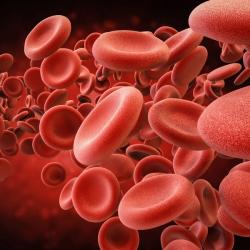
OR WAIT null SECS
High Incidence of VTE Observed in ICU Hospitalizations for COVID-19
Analysis data show 3 times more risk of intensive care unit care in patients with venous thromboembolism compared to non-VTE patients (RR: 2.78).
Although studies have demonstrated a high incidence of venous thromboembolism (VTE) in patients diagnosed with COVID-19, there is still a lack of understanding on the effect of incidence of VTE on prognosis of the disease.
As a result, a team of investigators, led by Nidhi Bharal Agarwala, Translational and Clinical Research School of Chemical & Life Sciences, Jamia Hamdard, assessed the association of VTE in comparison to the severity of COVID-19 infection to better help monitoring and management of at-risk patient populations.
After a meta-analysis was performed, investigators found high incidence of VTE in patients hospitalized in the ICU with COVID-19, with both deep vein thrombosis and pulmonary embolism showing negative health effects on the status of these patients.
Methods
The team conducted a literature search using PubMed and the Cochrane Central Register of Controlled trials. They identified trials using the keywords “COVID-19 and thromboembolism” and “COVID-19 and embolism” until February 2021.
In addition, the studies were rated on general quality as “good, fair, or poor”.
Further, investigators performed an exploratory meta-analysis in order to understand both the magnitude and direction of effect estimate. They calculated relative risk (RR) with a 95% confidence interval (CI).
After the systematic search, a total of 1607 publications were found, including 920 studies found using “COVID-19 and thromboembolism” and 686 studies using “COVID-19 and embolism”.
Findings
Then, following exclusion, a total of 13 studies (n = 6648 patients) were included in the study. Data show incidence of VTE was reported in both intensive care unit (ICU) care and non-ICU care in 12 studies, while 1 study reported incidence of VTE in survivors and non-survivors.
Within the 13 studies, 3973 males and 2675 females were included in the study. Most studies were determined to be of “fair” quality.
In association between VTE and severity of COVID-19 (n = 4 cohort studies), investigators found an almost three times higher risk of ICU care in patients with VTE, in comparison to non-VTE patients (RR: 2.78; 95% CI, 1.75 - 4.39, P <.001).
Further, in the association between pulmonary embolism and disease severity (n = 4 cohort and retrospective studies), data show patients with pulmonary embolism have an increased risk of ICU admission (RR 2.21; 95% CI, 1.86 - 2.61, P <.001).
Moreover, in determination of the association between deep vein thrombosis and disease severity (n = 5 cohort and retrospective studies), investigators found patients in the ICU had a higher risk of deep vein thrombosis (RR: 2.69; 95% CI, 2.37 - 3.06, P <.001).
Takeaways
Investigators concluded the meta-analysis showed a high incidence of pulmonary embolism, deep vein thrombosis and VTE in patients who required ICU care.
Additionally, they noted that any patients hospitalized with severe infections share common predispositions for VTE, including isolation and immobilization.
“However, it appears that in COVID-19 additional mechanisms might contribute to increased venous thromboembolism risk, including endothelial damage, microvascular thrombosis and occlusion, or even autoimmune mechanisms,” investigators wrote.
The study, “Venous thromboembolism is linked to severity of disease in COVID-19 patients: A systematic literature review and exploratory meta-analysis,” was published in The International Journal of Clinical Practice.


